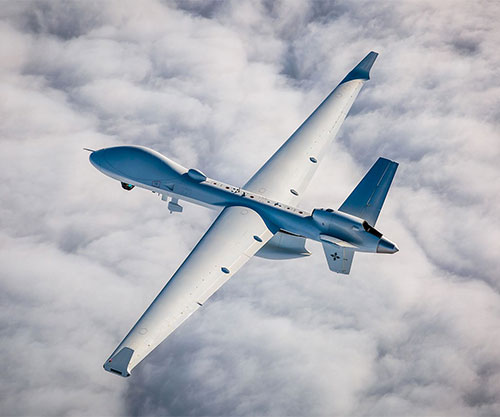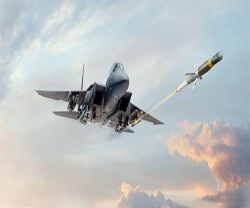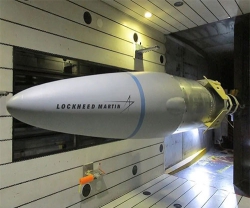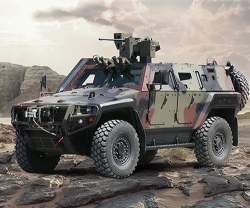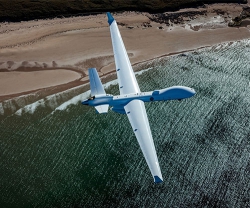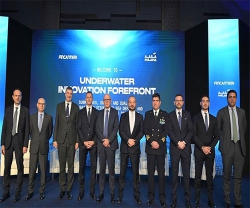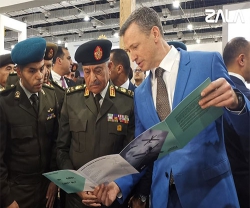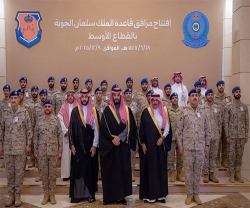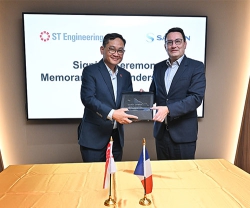As part of a U.S. Navy contract, an MQ-9B SeaGuardian® Unmanned Aircraft System from General Atomics Aeronautical Systems, Inc. (GA-ASI) supported the NORTHERN EDGE 2023 (NE23) exercise May 8-19, 2023.
The training exercise, which took place in the Gulf of Alaska, was one of a series of U.S. Indo-Pacific Command (IPACOM) exercises that prepares joint forces to respond to crises in the Asia Pacific region.
GA-ASI’s SeaGuardian is a maritime derivative of the MQ-9B SkyGuardian® and remains the first UAS that offers multi-domain Intelligence, Surveillance, Reconnaissance and Targeting (ISR&T) and has an internal payload suite that can prosecute surface and subsurface targets in support of Fleet Operations.
During NE23, SeaGuardian provided real-time Maritime ISR&T data feeds to the various IPACOM operations centers including Pacific Fleet, Pacific Air Forces, Joint Base Elmendorf-Richardson Joint Exercise Control Group (JECG) and various exercise and real-world watch floors. Real-time sensor data - including Signals Intelligence (SIGINT), radar, and full-motion video - was Processed, Exploited and Disseminated (PED) by operators via Minotaur Mission System.
The Minotaur system was developed by the Johns Hopkins University Applied Physics Laboratory. It links sensors, SIGINT, cameras, radar and communications equipment into a single, automated system that allows operators to more efficiently identify, track and target simultaneously with other users for expedited dynamic tasking. This classified data was transmitted to the Joint Fires Network using new DoD technologies allowing for the smart routing of communications between widely distributed communications nodes.
In addition, SeaGuardian showcased an array of operational payloads, including Electronic Support Measures (ESM), Radar Moving Target Indication (MTI) and Inverse Synthetic-Aperture Radar (ISAR), Communication Intelligence (COMINT), Automatic Identification System (AIS), high-definition Electro-Optical/Infra-Red (EO/IR) imaging system and Link 16.
The ESM payload on SeaGuardian was supplied by Sierra Nevada Corporation and the COMINT payload was made by L3Harris Technologies. The aircraft featured the SeaVue Multi-role radar from Raytheon Technologies. GA-ASI’s Link 16 solution leveraged the L3Harris Small Tactical Terminal (STT) KOR-24A radio and Ultra Electronics Air Defense Systems Integrator (ADSI) host software ran on the Parry Labs Stellar Relay Common Compute Module.
The GA-ASI-developed Detect and Avoid (DAA) system was also installed in SeaGuardian and received a limited certification from NAVAIR. This enabled SeaGuardian to perform beyond visual line-of-sight (BVLOS) operations within the exercise airspace.
SeaGuardian’s multi-domain capabilities allows it to flex from mission to mission and pass real-time sensor data directly to the fleet through Link 16 and satellite feeds to the shore-based command and intelligence centers. During NE23, the MQ-9B effectively passed ISR&T information to various surface and air units, and a litany of other U.S. and foreign units taking part in the exercise.
In addition to its contributions to the exercise, the SeaGuardian self-deployed from GA-ASI’s Desert Horizon flight operations facility in El Mirage, Calif., to Joint Base Elmendorf-Richardson, Alaska, covering over 2,000 nautical miles in a single flight and demonstrated SeaGuardian’s unrivalled expeditionary attributes. The aircraft self-deployed back to El Mirage following the exercise. All flights were flown from a forward deployed Mission Command Element comprised of a Certified Ground Control Station and Mission Intelligence Station located Naval Air Station Whidbey Island, Washington, exercising UAS Expeditionary Concept of Operations (CONOPS) in support of Exercise objectives.
General Atomics Aeronautical Systems, Inc. (GA-ASI), an affiliate of General Atomics, is a leading designer and manufacturer of proven, reliable remotely piloted aircraft (RPA) systems, radars, and electro-optic and related mission systems, including the Predator® RPA series and the Lynx® Multi-mode Radar.
With more than seven million flight hours, GA-ASI provides long-endurance, mission-capable aircraft with integrated sensor and data link systems required to deliver persistent flight that enables situational awareness and rapid strike. The company also produces a variety of ground control stations and sensor control/image analysis software, offers pilot training and support services, and develops meta-material antennas.

